The
Pyramids of Egypt
The Secrets Revealed
Part VI
Surveying The
fields of egypt ... Circa 4500 years ago
Hi all. With the discovery of the simple angles and ratios of The
Egyptian Pyramids I became convinced that they had been built
that way to make it easy for the ancient surveyors to lay out the
fields, that had washed away, quickly and acccurately. Today we
use trigonometry to help solve geometric problems and back then
they used a form of trig .. called Seked.
Here is what is known of "Seked" :
The seked (or seqed)
was an ancient Egyptian unit for the measurement of the
reciprocal of the slope of an inclined surface.[1]
The system was based on the Egyptian's linear measure known as
the royal cubit. The royal cubit was
subdivided into seven palms and each palm was further divided
into four digits. The inclination of measured slopes (Author's
Note: we call this tan) was therefore
expressed as the number of palms and digits moved horizontally
for each royal cubit
rise.
Information on the use of the seked in the design of
pyramids has been obtained from two mathematical papyri; the Rhind Mathematical Papyrus
in the British Museum and the Moscow Mathematical
Papyrus in the Museum of Fine Arts.[2]
Although there is no direct evidence of its application from the
archaeology of the Old Kingdom, there are a number of examples
from the two mathematical papyrii, which date to the Middle
Kingdom that show the use of this system for defining the slopes
of the sides of pyramids, based on their height and base
dimensions. The most widely quoted example is perhaps problem 56
from the Rhind Mathematical Papyrus.
However most people think only in height or rise but there is
another application for this formula and that is ON THE GROUND ! For
an example I am going to use The Red Pyramid althought I really
could use any of them. It is not often thought about but as you
approach any of the pyrmaids you can tell what angle you are
approaching form IF you
had the tools to measure certain things. Today's lesson is what
to measure and possibly how to do it. For example if you were
appraoching The Red Pyramid directly from the cardinal points
(east, west, north or south) here is what you would see:
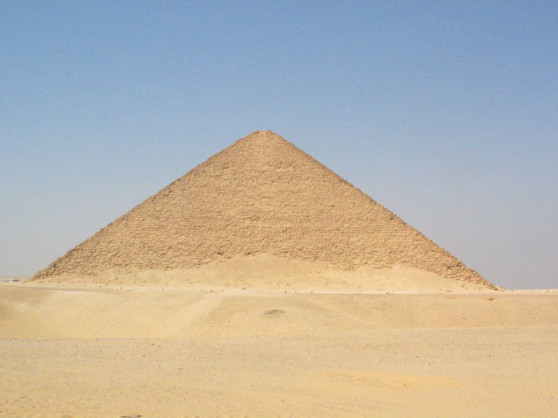
If we wanted to use trig language we could say we were
approaching this at 0 degrees and that facing the base at
0 or 90 degrees is 1 or in this case 420.00 cubits while
the other side is non existent and so has a value of 0 of
no cubits. |
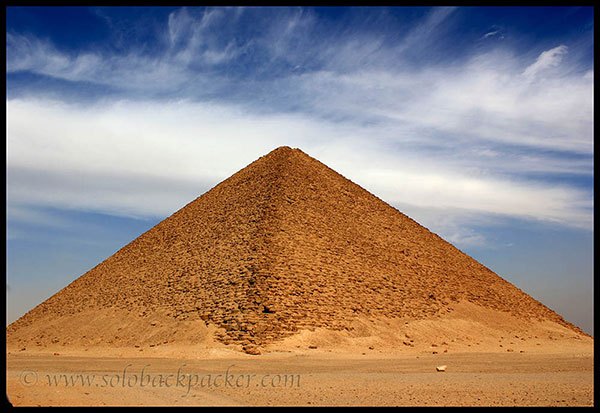
In this image above (it is supposed to be looking at it
edge on but this is the best picture I could find) we
have now rotated 45 degrees and the base is 594 or 1/2
base of 297 and each side is now 297 with the hypoteneuse
420 and the angle of 45 degrees . To the side is an image
of what I mean. The angle is 45 degrees. As you appraoch
this pyrmaid the ratio will always be between 0 and 1
(sounds like tan) and the side you can see will vary from
297 to 420 and the samller side will vary from 297 to 0.
And the overall measurent of what you can see will vary
from 420 to 594 Simple basic trigonometry. |
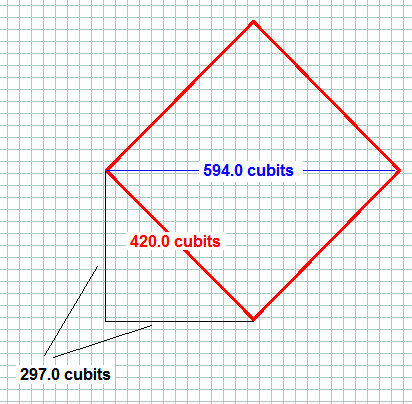
So basically you could tell what azimuth you are
approaching from simply by knowing the difference in the
short and long side that you can see. In the above image
you can see 297 and 297 You would know that is 1 (side a
or 297 divided by side b or 297) or tan of 45.0 degrees.
So you are approaching from the precise SW or SE |
| |
|
|
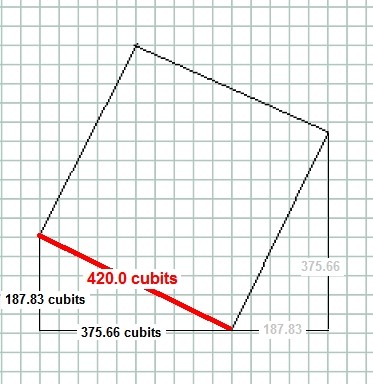
In this above image we are approaching from an angle or
azimuth of 26.5651 (this is a 1, 2 and sq rt of 5
triangle) The person approaching would know this if they
had a tool or were able to measure the left side of what
they see and were able to compare it to the size of the
right part that they see. they would meausre both sides
and then divide the two results and they would see that
"side a" was twice as large as side
"b" and so they would know it was 0.5 ratio and
they would know the angle or at least what the triangle
was since it became so common in the Giza Pyramids. To
the right is an iamge of the pyrmaid viewed from this
angle (approx) |
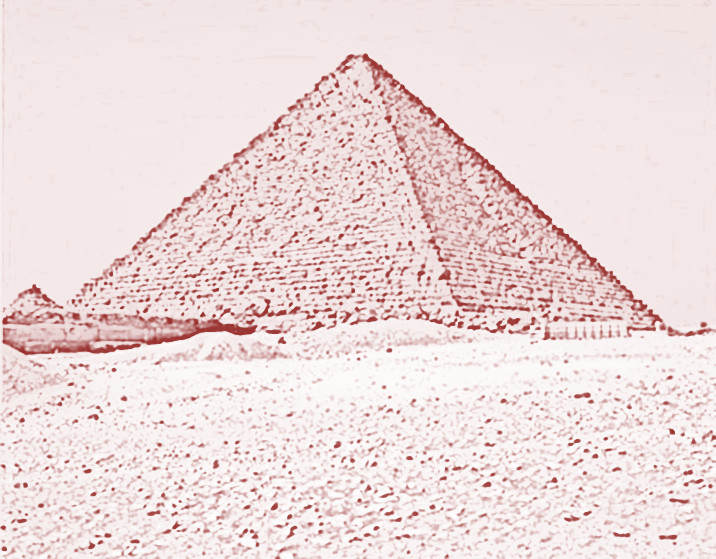
So from this picture you would be approaching the pyramid
from the SSW at 26.5651 degrees azimuth. Here is an image
that show this:
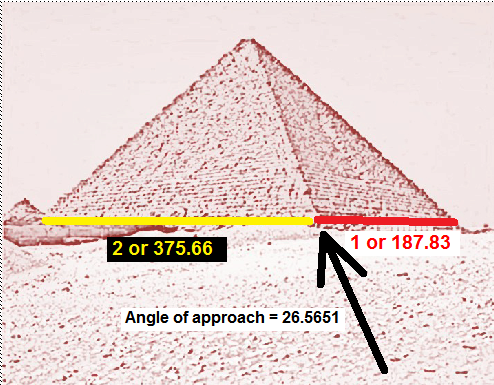
|
|
| |
|
|
| |
|
|
A = 160.72704159333770412595319329277
B = 388.02940365474043757383693954665





